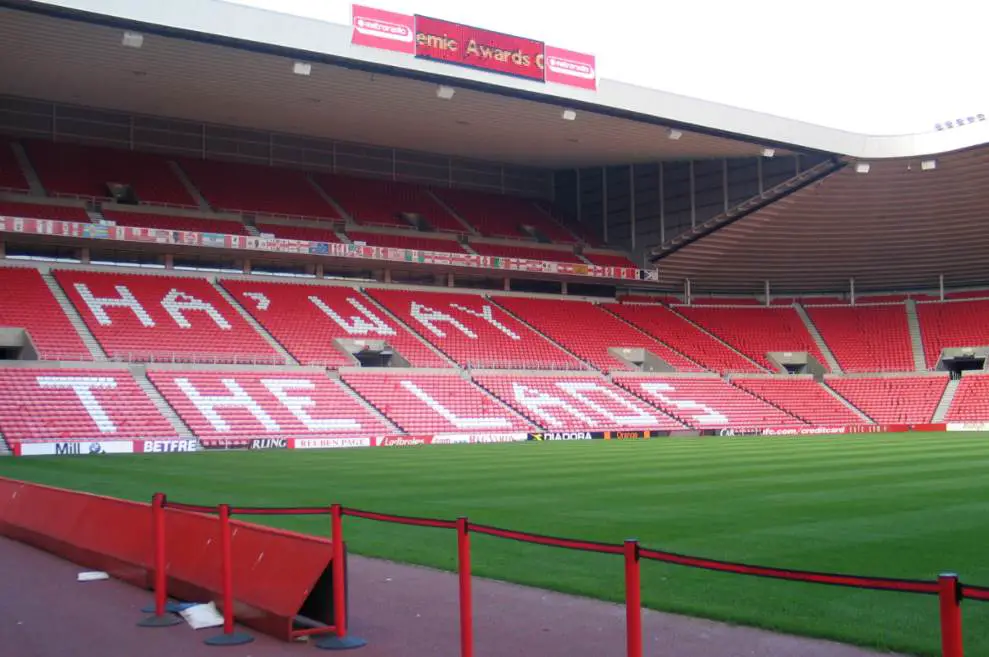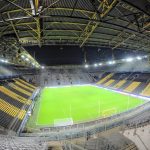Association Football, a sport better known as simply football (or soccer in 9 countries in the world) originated in England in the mid-19th century.
The FA or “Football Association was founded in 1863 and football has been the most popular sport in England ever since. This doesn’t mean that the stadiums in England are exclusively used for this sport though.
The stadiums are also used for rugby union matches, rugby league matches, cricket, athletics, and as concert venues.
Let’s take a closer look at some of the biggest stadiums in England, a list that includes some of the most iconic and biggest sports temples in the world.
1. Wembley Stadium
- Location: Wembley, London
- Capacity: 90,000
Wembley Stadium is by far the biggest stadium in England and one of the most iconic ones as well. The current stadium replaced the old Wembley in 2007, a stadium that opened its doors in 1923 and that featured twin towers.
The immense new stadium was erected on the same site as the now-demolished old stadium. It’s the second-largest stadium in Europe and is mostly used for important football matches, including FA Cup Finals and games of the Engish national football team.
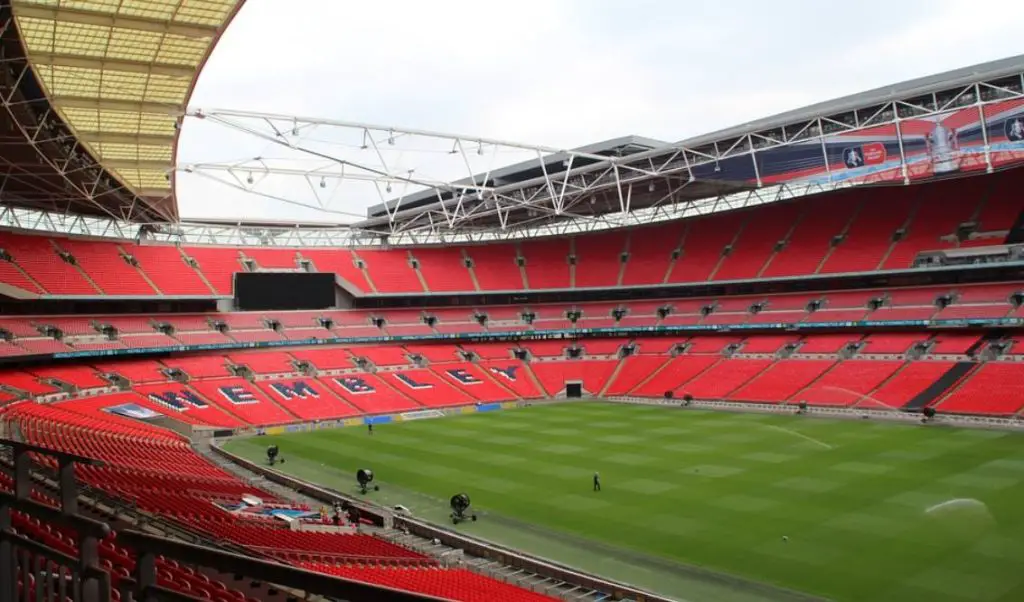
2. Twickenham Stadium
- Location: Twickenham, London
- Capacity: 82,000
Twickenham Stadium is another huge stadium in London that is used for rugby union matches and concerts. Yes, you won’t see football matches being played here because the stadium is owned by the RFU or “Rugby Football Union,” the governing body of the sport in England.
It’s the largest rugby union stadium in the world and has been expanded several times throughout its history. The original version of the stadium was constructed between 1907 and 1909 and the final redevelopment took place in 2018.
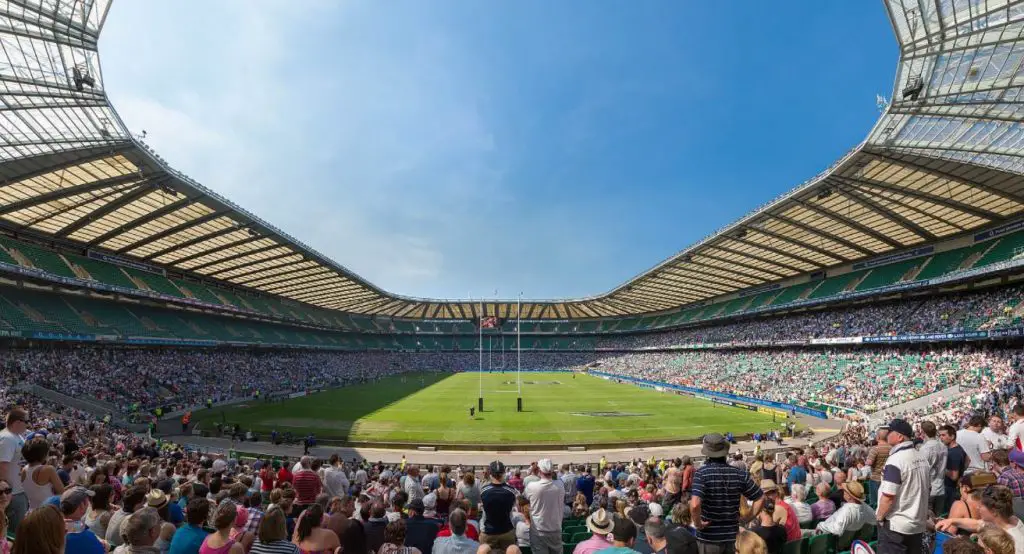
3. Old Trafford
- Location: Greater Manchester, North West Angland
- Capacity: 74,140
Old Trafford is the legendary home venue of Manchester United, one of the biggest football clubs in the world. This huge stadium is also the largest club football stadium in England as both Twickenham and Wembley Stadium aren’t used by a football club.
The stadium was first constructed between 1909 and 1910 and is named after the location it is located in Greater Manchester. It has been the home of Man U since 1910 except for a brief period between 1941 and 1948 shortly after the stadium was bombed during World War II.
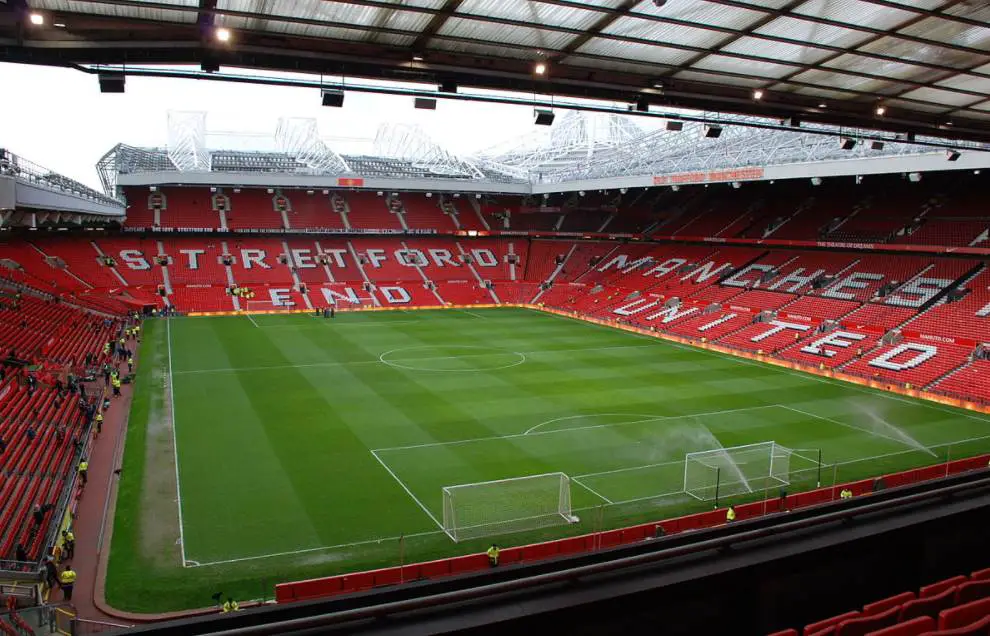
4. Tottenham Hotspur Stadium
- Location: Tottenham, London
- Capacity: 62,850
The Tottenham Hotspur Stadium is the new modern football temple of the English football club Tottenham Hotspur. It was constructed between 2016 and 2019 and replaced the old stadium of the club called White Heart Lane which seated 36,284 people.
The old stadium was completely demolished in 2016 to make way for the new stadium. It’s a multi-purpose stadium that features the world’s first dual retractable football pitches, one with natural grass for football matches and another with a synthetic turf field for American football games and concerts.
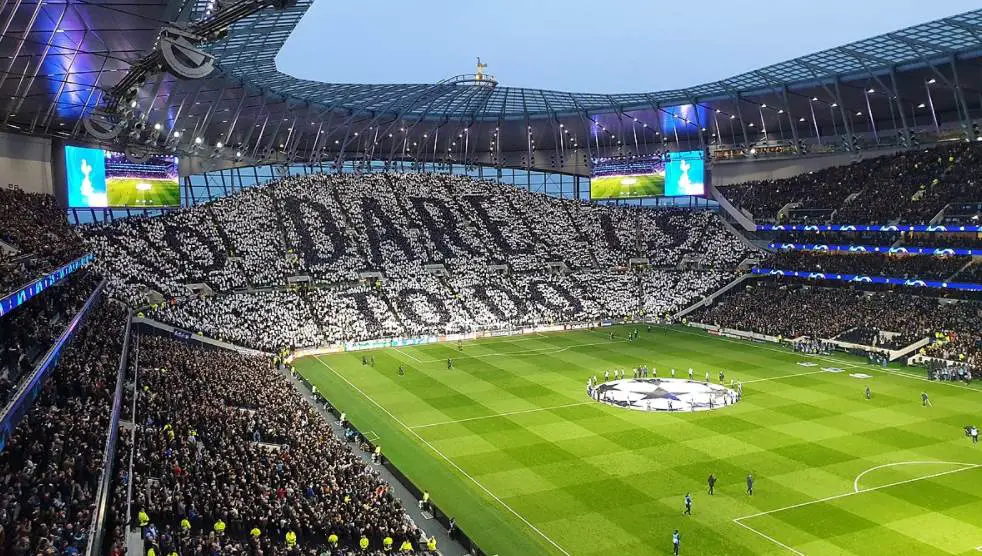
5. Emirates Stadium
- Location: Holloway, London
- Capacity: 60,260
The Emirates Stadium is the home of the Engish football club Arsenal F.C. It was originally known as Ashburton Grove and is also referred to as the “Arsenal Stadium” and was constructed between 2004 and 2006 at the enormous cost of £390 million.
As you surely expected, this new football stadium replaced the club’s old home, Highbury, a stadium that first opened its doors in 1913 and that seated 38,419 spectators. The old stadium was redeveloped as a residential area called “Highbury Square.”
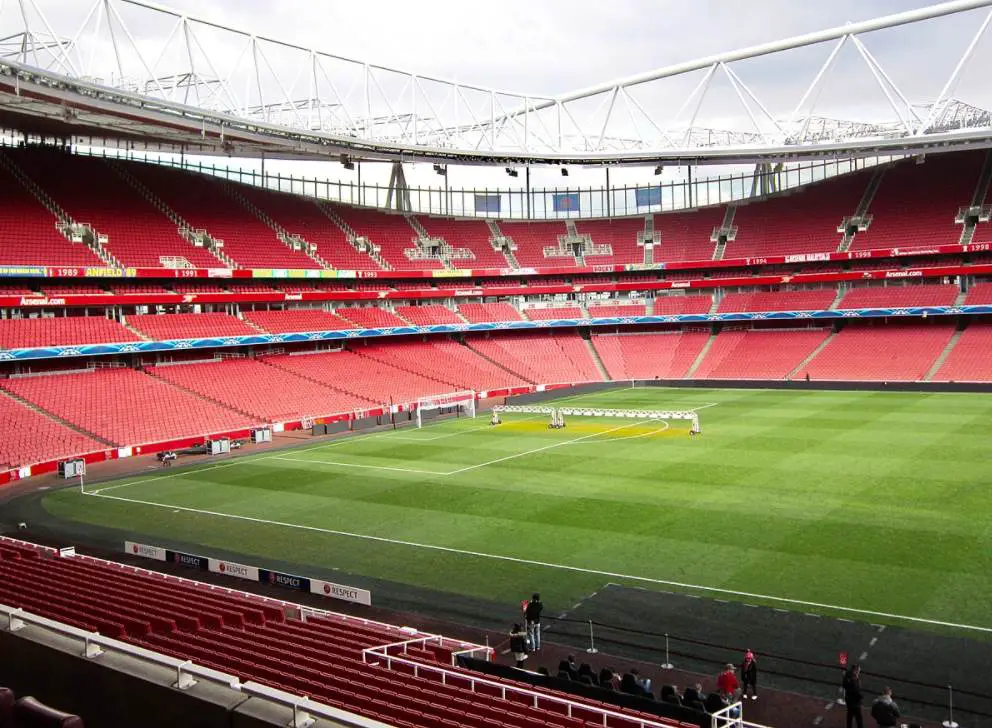
6. London Stadium
- Location: Stratford, London
- Capacity: 60,000
The London Stadium is also known as the “Olympic Stadium” and is located in the Queen Elizabeth Olympic Park in the Stratford neighborhood of London. The alternative name of the stadium and its location reveals that it was specially constructed for the 2012 Summer Olympics.
The original capacity of the stadium during the Olympic games was 80,000 but this was later reduced to 66,000 seats. Only 60,000 can be used for football games. This is also the main purpose of the stadium today as it became the home of English football club West Ham United in 2016.
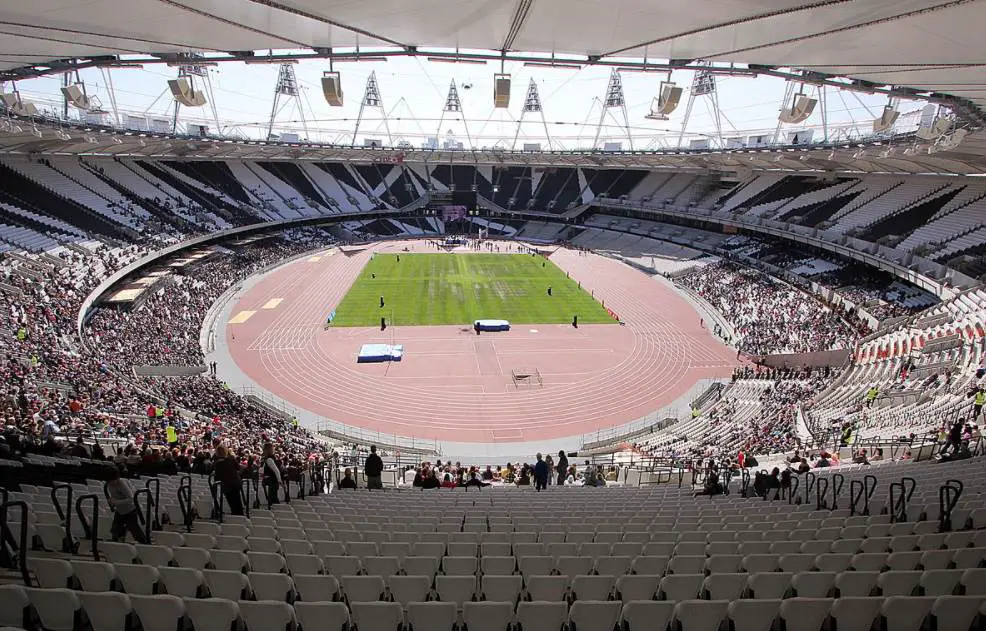
7. Etihad Stadium
- Location: Sportcity, Manchester
- Capacity: 53,400
The Etihad Stadium is the official name of the City of Manchester Stadium, the home of Engish football club Manchester City F.C. The stadium was originally constructed to host the 2002 Commonwealth Games. The athletics track was removed shortly after in 2003.
The stadium was expanded once during its history with an additional third tier in the South Stand. This has turned this amazing venue into one of the biggest stadiums in England. It’s currently used for football matches and a wide variety of other events, including rugby league and rugby union matches, boxing matches, and concerts.
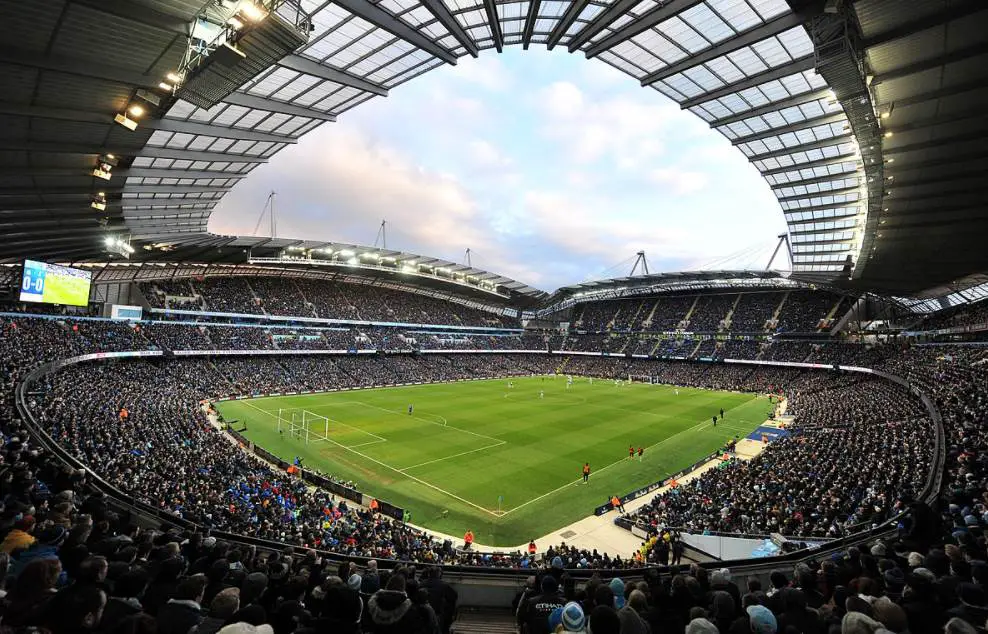
8. Anfield
- Location: Anfield, Liverpool
- Capacity: 53,394
Anfield is the historic home of one of England’s most popular football clubs, Liverpool F.C. The original version of this stadium was completed in 1884 and initially served as the home of Everton F.C. until 1891. They only moved out to Goodison Park after a dispute with the management.
The most famous stand of the stadium is referred to as “The Kop,” a reference to the term “Spion Kop.” This term is used to describe single-tier terraces in football stadiums with the noisiest fans. The term itself was derived from a hill in South Africa where the Battle of Spion Kop took place in January 1900 between the British and the Boer Republics.
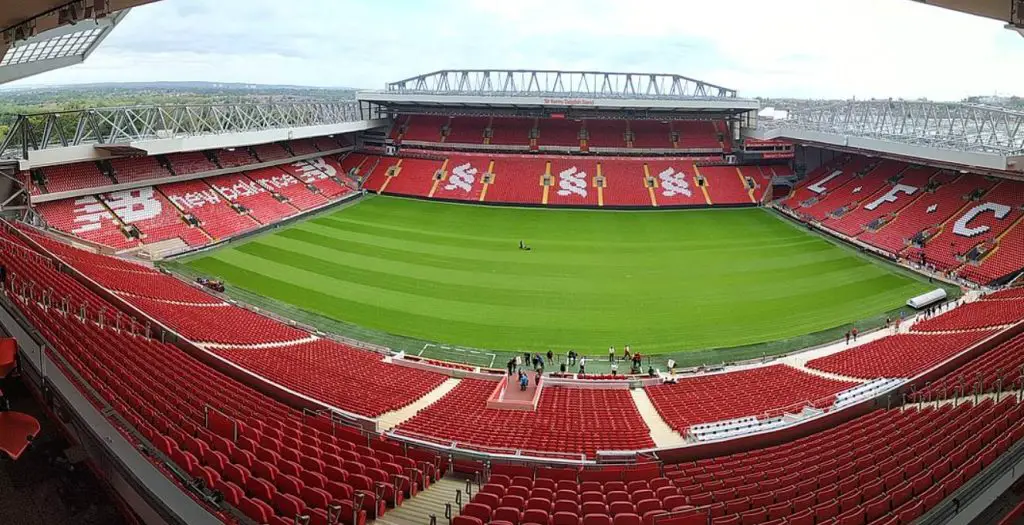
9. St James’ Park
- Location: Newcastle upon Tyne, North East England
- Capacity: 52,305
St James’ Park is the home of English football club Newcastle United F.C. and has been since 1892. The stadium was greatly expanded between 1998 and 2000 and now features several extremely high tiers and a relatively small main stand.
The reason for this is that residents continuously resisted this expansion, an argument that started way back in the 1960s. Multiple proposals to move to another location were rejected and the stadium was finally expanded din the late 20th century.
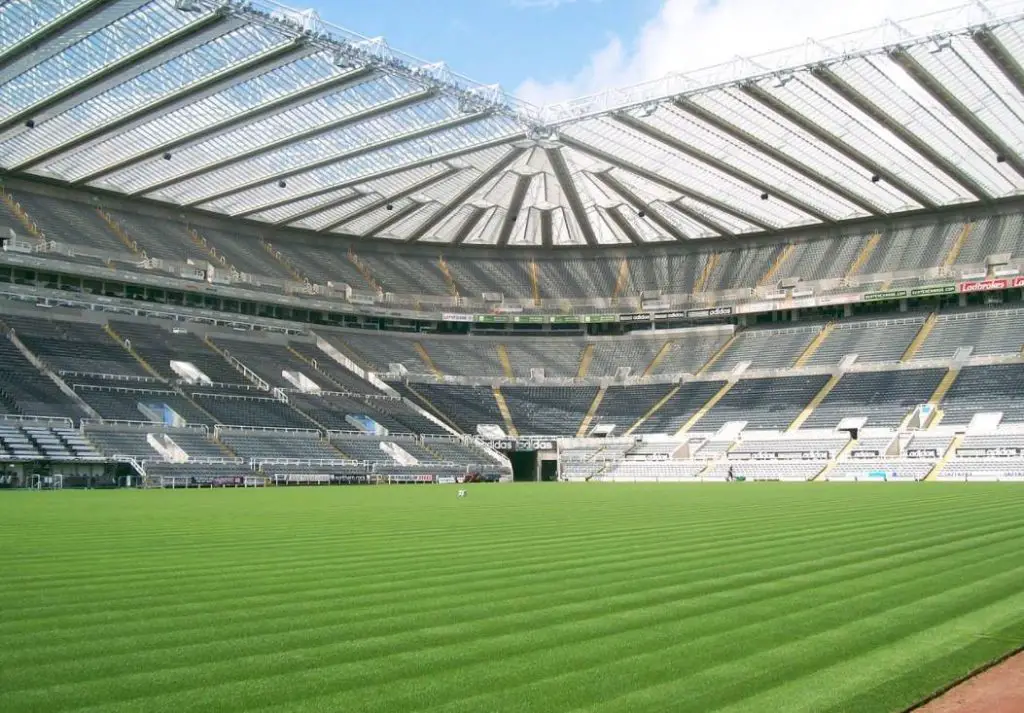
10. Stadium of Light
- Location: Monkwearmouth, Sunderland
- Capacity: 49,000
The stadium of LIght is the home of Newcastle’s main rivals, Sunderland A.F.C. The remarkable name of the stadium is a reference to the coal mining history in the region and the fact that it was constructed on the site of a former coal min called Monkwearmouth Colliery.
The stadium was constructed between 1996 and 1997 and originally featured 42,000 seats. An additional tier was added to the North Stand in 2000 which raised the capacity to 49,000 seats. This large capacity resulted in the stadium being nicknamed “The Wembley of the North.”
